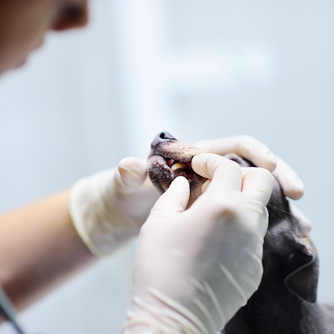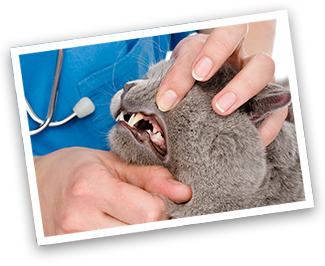Broken Teeth

Broken or fractured teeth are a common finding in pets. In most cases, broken teeth are caused by the items they choose to chew. Objects that are notorious for breaking teeth include cow hooves, real bones, rocks, ice, and hard plastic bones.
Cats, as well as dogs, are susceptible to broken teeth following trauma such being hit by a car. The result is often a tooth fracture that may or may not extend into the pulp canal within the tooth. If the fracture opens the pulp canal, which houses the blood and nerve supply to the tooth, then the tooth will be very painful.
Most pets, however, do not show obvious signs of pain. These pets will typically chew on the other side of the mouth or avoid using the broken tooth until the nerve dies. Until the nerve dies, the exposed pulp is sensitive and most pets will react if it is touched or otherwise stimulated. Once the nerve dies, the open pulp canal is an area that food, saliva, debris, and bacteria can enter the tooth resulting in an infection. Again, most pets do not show much sign of an infected tooth. The vast majority of pets with broken, infected teeth will not swell or drain pus at this site as one might expect, but the infection is managed by the immune system and smolders. The pain associated with the broken tooth changes from an acute pain to a chronic ache.
Antibiotics will help control the infection temporarily, but the problem recurs after discontinuing the medication. The infection will persist until the source of the infection is removed by extracting the tooth.

